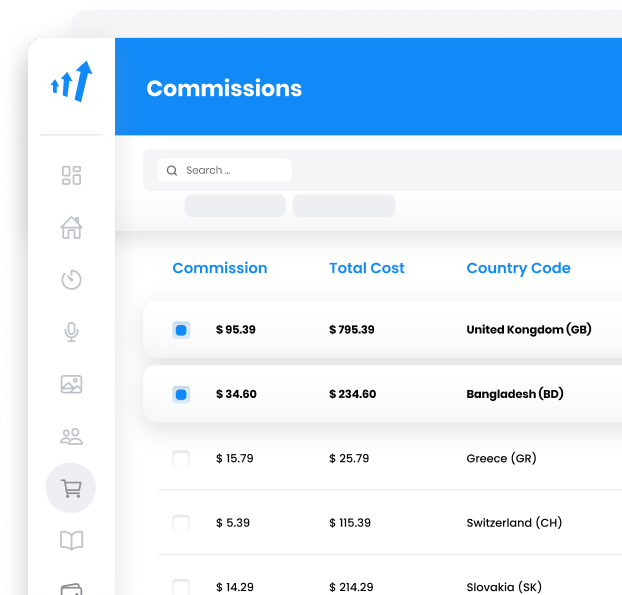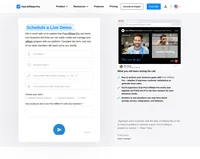What is cost per sale?
Cost per sale or CPS is a kind of payment methods for promoting products, services or websites on the Internet. Merchants pay their affiliates for every sale. It means when transaction made by credit card is completed. This kind of affiliate marketing reduces vulnerability to frauds by banning IP addresses with fraudulent behavior. So, CPS method is one of the most cost-effective and fraud protective.
Cost Per Sale (CPS), sometimes also referred to as Pay Per Sale, is a performance-based pricing model predominantly used in affiliate marketing. In this model, affiliates earn a commission for each sale they generate through their marketing efforts. Unlike other models such as Cost Per Click (CPC) or Cost Per Impression (CPI), CPS ensures that advertisers only pay when a sale is confirmed, making it a cost-effective strategy. This model is beneficial for both advertisers and affiliates, as it aligns incentives around actual sales rather than clicks or views.
CPS is particularly advantageous for advertisers because it directly ties the marketing expenditure to revenue generation. Affiliates, often website or blog owners, promote the merchant’s products or services through unique tracking links. Once a sale is made through these links, the affiliate receives a commission, usually a percentage of the sale or a fixed amount.

Key Concepts in CPS
- Performance-Based: CPS is inherently performance-driven. Affiliates must convert leads into actual sales to earn a commission, making it a highly effective model.
- Risk Mitigation: Advertisers only pay for successful transactions, minimizing the risk of spending on ineffective advertising. This model reduces vulnerabilities to fraud by employing systems that can ban fraudulent IPs.
- Incentive Alignment: Affiliates are incentivized to optimize their marketing strategies to drive sales, ensuring mutual benefit. Quality content and genuine promotion are crucial to building trust and increasing sales.
How Does CPS Work?
CPS operates on a straightforward mechanism. Once an affiliate joins a merchant’s program, they receive a unique tracking link to promote the merchant’s products or services. This link is embedded in their content across various platforms such as blogs, social media, or email newsletters. When a customer clicks the link and completes a purchase, the affiliate earns a predetermined commission. This entire process is monitored using affiliate marketing software, ensuring transparency and accuracy in tracking sales and commissions.
Steps in the CPS Process
- Affiliate Enrollment: Affiliates join a merchant’s program and receive a unique tracking link.
- Promotion: Affiliates promote the product using the tracking link across their chosen platforms. Effective promotion requires understanding the audience and tailoring content to their interests.
- Conversion: A customer clicks the link and makes a purchase. The quality of the affiliate’s content and the trust they have built with their audience significantly impact conversion rates.
- Commission: The sale is tracked, and the affiliate receives a commission. Detailed analytics on clicks, sales, and commissions provide insights into campaign performance.
Benefits of CPS for Advertisers and Affiliates
For Advertisers
- Cost-Effectiveness: Advertisers pay only for actual sales, making CPS a financially prudent choice. It allows for precise budgeting as payments are directly linked to sales outcomes.
- Risk Reduction: Payments are contingent on sales, reducing the financial risks associated with upfront marketing expenses. The model can also help in minimizing fraud through sophisticated tracking systems.
- Expanded Reach: Affiliates help brands reach broader audiences and penetrate new markets. By leveraging diverse affiliate networks, advertisers can tap into niche markets and expand their customer base.
For Affiliates
- Earning Potential: With no cap on commissions, affiliates can earn significantly based on their sales performance. This potential is enhanced by focusing on high-demand products and effective marketing strategies.
- Flexibility: Affiliates choose products aligning with their interests and audience, enhancing authenticity. This flexibility allows affiliates to create genuine content that resonates with their followers.
- Low Entry Barrier: Starting as an affiliate requires minimal investment, making it accessible for many. The low entry cost and potential for high earnings make it an attractive opportunity for individuals and small businesses.
Challenges and Solutions
Challenges for Advertisers
- Quality Affiliate Recruitment: Ensuring affiliates can generate quality sales without harming brand reputation can be challenging.
- Solution: Utilize reputable affiliate networks and conduct thorough vetting processes to ensure affiliates align with brand values and sales goals.
Challenges for Affiliates
- High Competition: Standing out in crowded niches can be difficult.
- Solution: Focus on niche markets and offer unique content to attract dedicated audiences. Developing a deep understanding of the audience and leveraging SEO strategies can enhance visibility and competitiveness.
Best Practices for Success
For Advertisers
- Competitive Commissions: Offering attractive commissions can attract high-quality affiliates. A well-structured commission plan incentivizes affiliates to prioritize the advertiser’s products.
- Support and Resources: Providing affiliates with marketing materials and support can boost their effectiveness. Regular communication and updates on product offerings and marketing strategies can enhance affiliate performance.
For Affiliates
- Audience Understanding: Tailoring content to audience needs increases conversion rates. By analyzing audience behavior and preferences, affiliates can craft compelling content that drives sales.
- SEO Optimization: Implementing SEO strategies can enhance visibility and drive traffic. Optimizing content for search engines helps in reaching more potential buyers and improving conversion rates.
Calculating and Using CPS
CPS is calculated by dividing the total cost of the affiliate marketing campaign by the number of sales generated. This figure helps advertisers assess campaign efficiency and make data-driven decisions. It is essential for measuring the return on investment (ROI) and guiding future marketing strategies.
Formula
CPS = Total Campaign Cost / Number of Sales
By understanding and applying this formula, marketers can evaluate the performance of different campaigns and adjust their strategies to optimize outcomes.
Frequently Asked Questions
How is cost per sale calculated?
Cost per sale is calculated by dividing the total cost of your campaign by the total revenue generated.
What is a good cost per sale?
The answer to this question will vary depending on the products or services being offered, the industries, and a number of other factors. In general, businesses should aim for a cost per sale that is lower than the average order value for their products or services.
Discover Post Affiliate Pro's flexible pricing plans tailored to fit your business needs, with options for Pro, Ultimate, and Network packages. Enjoy a free trial with no credit card required, no setup fees, and the freedom to cancel anytime. Benefit from features like unlimited affiliates, advanced reporting, customizable interfaces, and lifetime support. Save up to 20% with annual billing and take advantage of more than 220 integrations. Perfect for businesses seeking to enhance their affiliate marketing efforts. Visit now to find the ideal plan for you!
The leader in Affiliate software
Post Affiliate Pro offers a comprehensive affiliate software platform to manage multiple affiliate programs with ease. Enjoy no setup fees, 24/7 customer support, and a free 1-month trial. Ideal for small and large businesses, it features precise tracking, automated workflows, and customizable tools to boost your affiliate marketing success. Try it now and streamline your affiliate operations effortlessly!
Explore seamless integrations with Post Affiliate Pro to enhance your affiliate marketing strategies. Discover solutions for e-commerce, email marketing, payments, and more, with easy integrations for platforms like 1&1 E-Shop, 2Checkout, Abicart, and many others. Optimize your affiliate network with these powerful tools.
Explore Post Affiliate Pro's comprehensive Affiliate Program Directory, featuring diverse opportunities with competitive commissions and flexible payout options. Discover programs across various industries, accept worldwide traffic, and elevate your affiliate marketing game. Join today and maximize your earnings!










